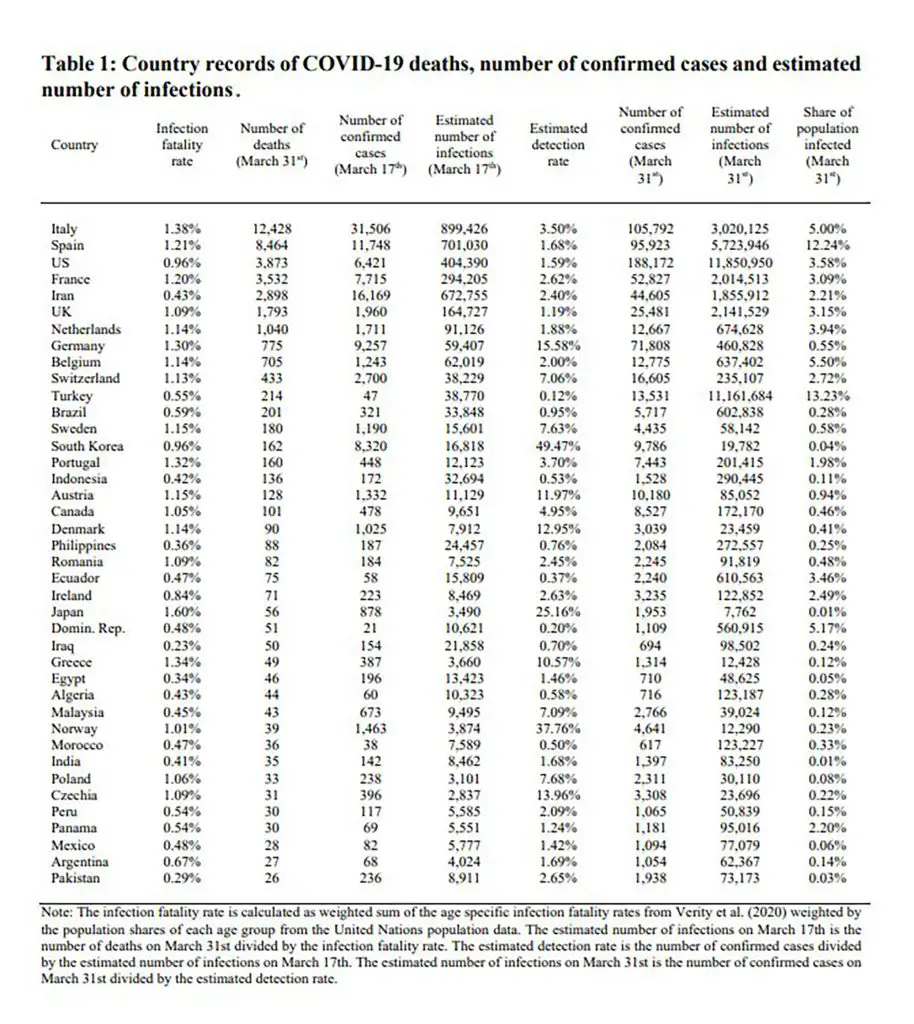A new German study suggests over 2 million people in the UK are currently infected with the coronavirus and more than 12 million in the United States.
The report was published by respected German magazine Spiegel and a copy was obtained by Newsflash saying that the almost 1.5 million people reportedly currently infected with the killer disease probably represents only around six percent of the real total, which, based on their new research, was more likely to be in the “tens of millions”.
The research was carried out by experts at the University of Goettingen who said that the current differences in standards of testing had motivated them to approach the problem of finding the real numbers infected from a different angle.

Newsflash 
Newsflash 
Newsflash 
Newsflash
But as of the end of March they had calculated that the UK has over 2 million people infected, which is over 3 percent of the population. They said that in Spain it was close to 6 million infections, in Italy just over 3 million, in the United States almost 12 million, and in Turkey also close to 12 million.
Coming up with the figures, they noted that as well as the difference in infection levels against deaths, there was also a difference between time of infection and eventual death in figures being reported, but that there should be more similarities as it was the same pathogen behind every infection.
They added that any country that had significant deviations from this statistic was probably not properly assessing the number of people actually infected. They highlighted examples of Italy where the fatality rate was 11.7 percent through to Germany where it was 1.1 percent.
They said that this was a vast difference of a factor of 10.6 and given that it was the same pathogen, it indicated differences in the quality of the way the countries were keeping records.
In order to find out what the real infection rate was, the team extrapolated data from the number infected in mainland China and compared it with those of international Wuhan residents returning on repatriations flights. They said they presented “novel age-specific estimates for the infection fatality rate”.
They cited returning Wuhan expats that would have been subjected to extensive testing, meaning that a large number of undiagnosed cases were unlikely, meaning that the figures were likely to be accurate.
This then became the benchmark for recording infection fatality rates in 40 of the most affected countries worldwide which was modified by UN population data to correct for differences in age distributions.
They said that the average time from the onset of symptoms to death was around 18 days, and added: “If we conservatively assume that individuals are tested four days after symptom onset and if countries were successful in tracing the majority of infections, dividing the cumulative number of deaths on 31st March by the cumulative number of confirmed cases by 17th March should yield case fatality rates similar to the reported infection fatality rates.”
They added it was now known however that this was not the case and in all countries the “number of confirmed cases by 17th March was substantially lower than what would have been expected given the total number of deaths reported two weeks later.”
They added: “The average detection rate is around six percent, making the number of cases that is reported in the news on a daily basis rather meaningless. To estimate the true number of infections on 31st March, we assume for simplicity that detection rates are constant over time.
They concluded: “While the Johns Hopkins data report less than a million confirmed cases globally at the time this correspondence is written, we estimate the number of infections to be in the tens of millions.”
They warned that the many undetected cases meant that the current travel restrictions and social distancing were the only ways to significantly reduce the number of new infections.
They added: “In the absence of such measures, the virus might remain undetected again for an extended period of time and a new outbreak is likely to be just a matter of time.”
The team noted antibody testing which was now slowly being introduced would probably clarify the real numbers in the coming months. The report also admitted that there was also different standards sometimes in recording the cause of deaths which could in turn affect their statistics.
Study author Sebastian Vollmer, Sebastian Vollmer, Professor of Development Economics at the University of Göttingen, said: “These results mean that governments and policy-makers need to exercise extreme caution when interpreting case numbers for planning purposes.
“Such extreme differences in the amount and quality of testing carried out in different countries mean that official case records are largely uninformative and do not provide helpful information.”
His colleague, Dr Christian Bommer added: “Major improvements in the ability of countries to detect new infections and contain the virus are urgently needed.”
The ViralTab page is created by and dedicated to professional, independent freelance journalists. It is a place for us to showcase our work. When our news is sold to our media partners, we will include the link here.



